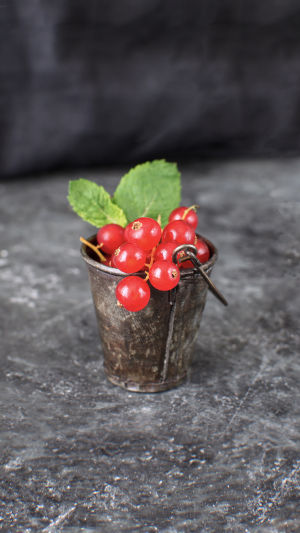Red currants are a popular berry cherished for their unique flavor and rich nutritional value.
This article will explore the origins, health benefits, and culinary applications of red currants.
<b>Origin and Cultivation</b>
Red currants belong to the Grossulariaceae family, with a cultivation history dating back thousands of years.
They are native to Europe and have since spread to North America and other regions. Red currants thrive in cool climates and fertile soils, typically growing in sunny locations. As a perennial plant, red currant bushes can live for many years, producing fruit annually.
When cultivating red currants, it is crucial to select the right soil and location. They prefer acidic to neutral soils, with an ideal pH range of 5.5 to 7.0. Additionally, maintaining adequate spacing between bushes is essential to ensure proper ventilation and sunlight.
<b>Health Benefits</b>
Red currants are not only delicious but also offer numerous health benefits:
1. Antioxidant Properties: Red currants are rich in antioxidants, such as anthocyanins and flavonoids, which help neutralize free radicals in the body, reducing oxidative stress and lowering the risk of chronic diseases.
2. Digestive Aid: With a high fiber content, red currants promote gut health, aiding in normal digestive function and preventing constipation.
3. Immune Boost: The vitamin C in red currants enhances the immune system, helping the body resist colds and other infections.
4. Heart Health: Research suggests that the antioxidant properties of red currants can help lower cholesterol levels and improve blood circulation, reducing the risk of cardiovascular diseases.
5. Skin Health: Due to their high vitamin C content, red currants promote collagen production, improve skin elasticity, and slow the aging process.
<b>Culinary Applications</b>
Red currants can be enjoyed fresh and serve as an excellent ingredient in various dishes. Their tart-sweet flavor makes them perfect for desserts, salads, and beverages.
1. Desserts: Red currants are commonly used in jams, jellies, cakes, and pies. Their tartness balances sweetness, enhancing the overall flavor of desserts.
2. Salads: Adding red currants to salads can enhance flavor and color, particularly when paired with cheese, nuts, and other fruits.
3. Beverages: Red currants can be used to make juices or smoothies. Their refreshing taste makes beverages more appealing.
4. Pickled Foods: In some regions, red currants are also used as an ingredient in pickled foods, adding flavor to pickled dishes.
<b>Harvesting and Storage</b>
Red currants typically ripen in the summer, with mature fruits displaying a vibrant red color and a delicious tart-sweet flavor. Care should be taken when picking to avoid damaging the fruit. After harvesting, red currants can be stored in the refrigerator for a few days, or long-term storage, they can be frozen.
In conclusion, red currants are a nutritious and tasty berry worth incorporating into our daily diet. Whether eaten fresh or used as an ingredient in various dishes, red currants can provide numerous health benefits. With an understanding of the many advantages of red currants, we hope you will use them more in your daily life and enjoy this delightful and healthful fruit.





